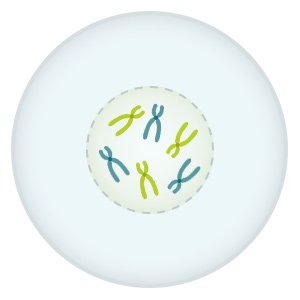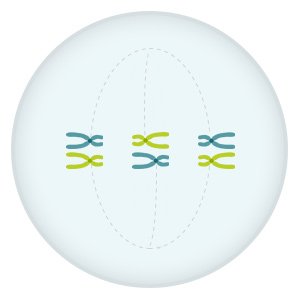
|
Unlike in “normal” cell division (mitosis), in meiosis the chromosome pairs first line up along the center of the cell. |
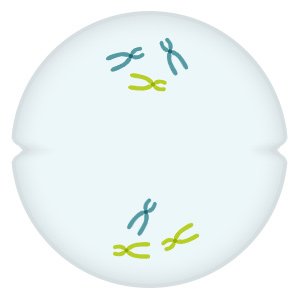
|
The pairs separate there. The individual chromosomes then move to opposite sides of the cell, together with their attached copy. The cell membrane starts pinching inward to form two separate cells. |
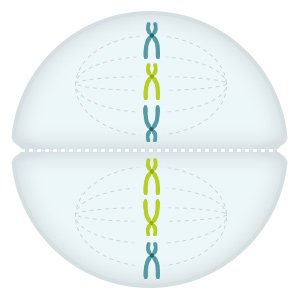
|
A second cell division follows: The copies of the chromosomes separate. |

|
So the parent (original) cell gives rise to four sex cells. The nucleus of each sex cell contains half of the original genetic material. |
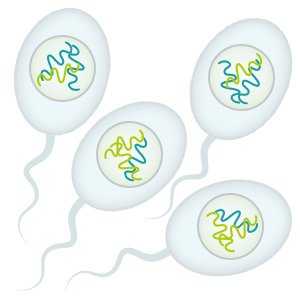
|
In men, these cells develop into sperm cells. |
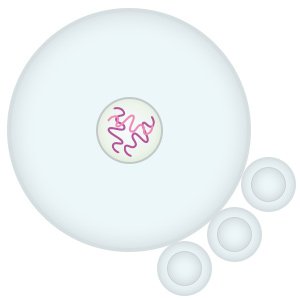
|
In women, only one of the four sex cells becomes an egg cell that can be fertilized. During meiosis, it receives most of the cell body of the parent cell. The three smaller cells – referred to as polar bodies – break down and disappear. |

|
If a sperm cell fertilizes an egg cell, the nuclei of the two cells combine. |
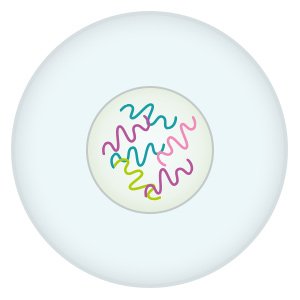
|
A new cell with a complete set of genetic information is produced – one half is from the mother, and the other half is from the father. The fertilized egg cell can now start developing into a baby. |
The formation of sex cells is a central part of human reproduction: In fertilization, an egg cell and a sperm cell combine. These sex cells are also called reproductive cells or gametes. Sperm cells are produced in men's testicles and egg cells are produced in women's ovaries. Sex cells are different from other cells in one special way: Put simply, they only have one half of the total amount of human genetic information. When a sperm cell fertilizes an egg cell, the resulting cell has a full set of genetic information again.
Sex cells are formed through a particular kind of cell division called meiosis. Unlike in normal cell division (mitosis), the genetic material of the original (parent) cell is divided up twice.
Brandes R, Lang F, Schmidt R. Physiologie des Menschen: mit Pathophysiologie. Berlin: Springer; 2019.
Menche N. Biologie Anatomie Physiologie. München: Urban und Fischer; 2016.
Pschyrembel Online. 2022.
IQWiG health information is written with the aim of helping people understand the advantages and disadvantages of the main treatment options and health care services.
Because IQWiG is a German institute, some of the information provided here is specific to the German health care system. The suitability of any of the described options in an individual case can be determined by talking to a doctor. informedhealth.org can provide support for talks with doctors and other medical professionals, but cannot replace them. We do not offer individual consultations.
Our information is based on the results of good-quality studies. It is written by a team of health care professionals, scientists and editors, and reviewed by external experts. You can find a detailed description of how our health information is produced and updated in our methods.
Stay informed
Subscribe to our newsletter or newsfeed. You can find our growing collection of films on YouTube.


